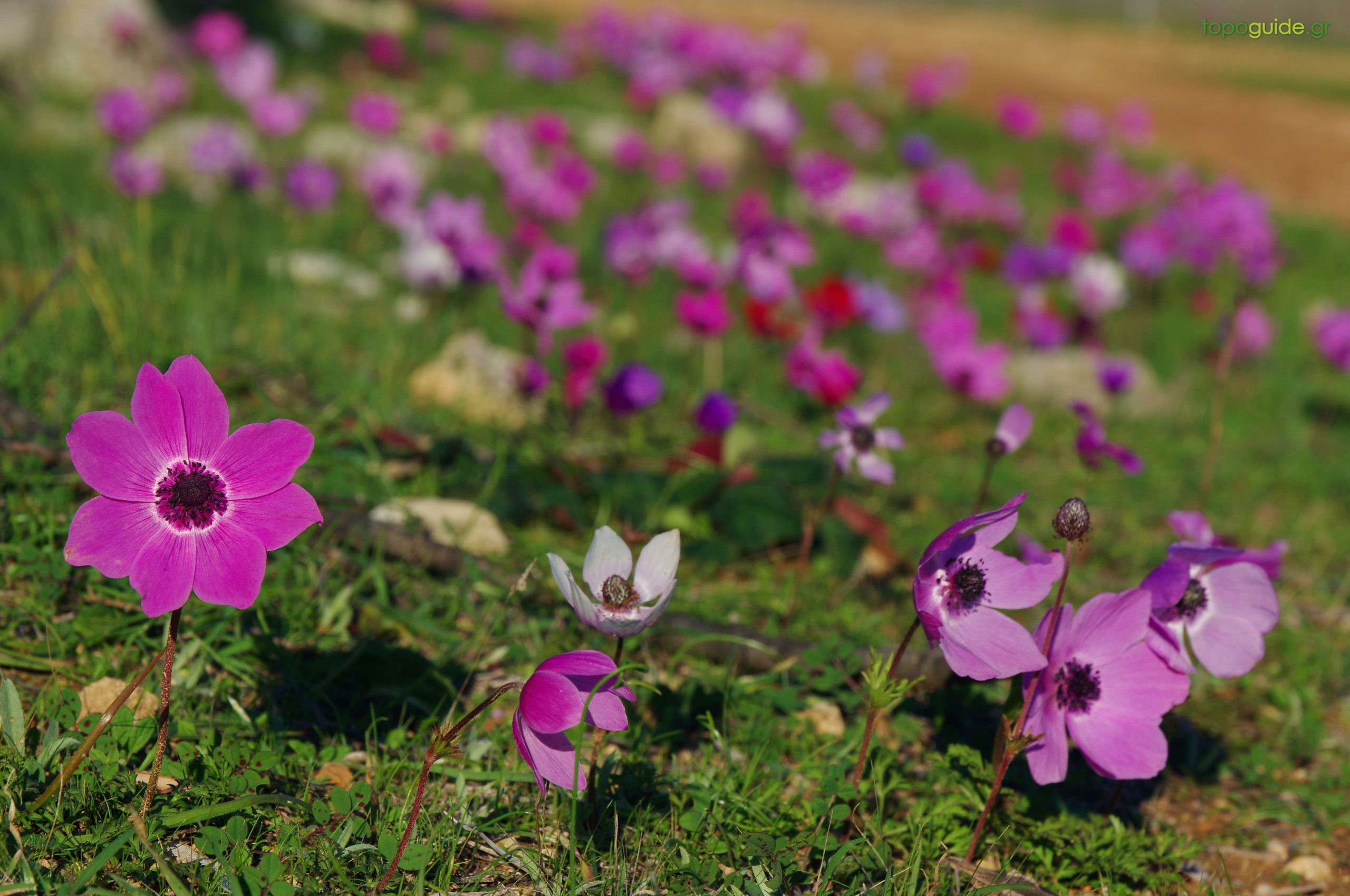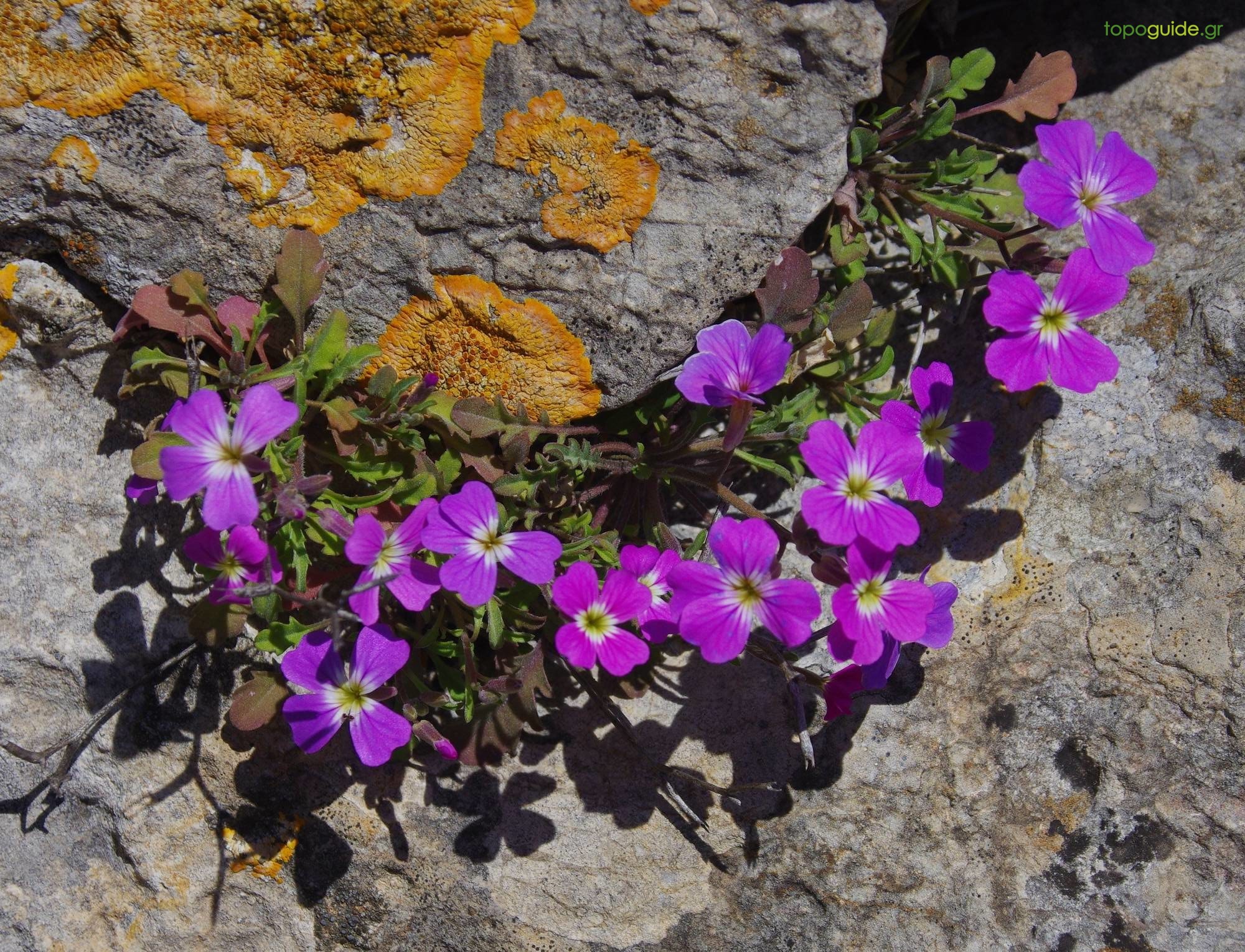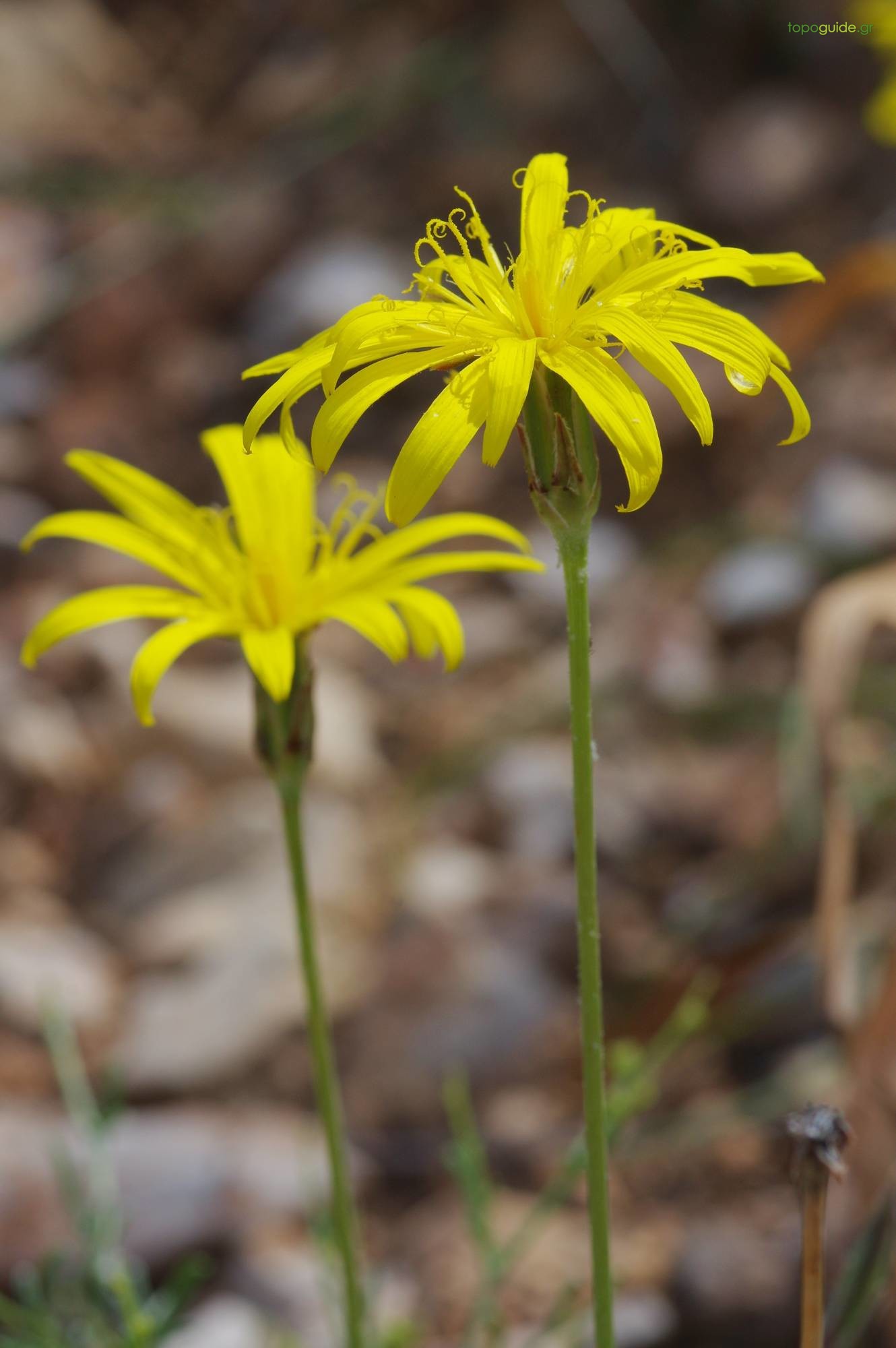Flora of Pelion
In antiquity, the flora of the area had gathered wide interest. This is reflected to the fact that the ancient Greeks had placed the wise healer centaur Chiron at Pelion, his medicinal art being based on miraculous products made from local herbs. Thus, it is quite impressive the fact that the flora of the area was never systematically studied. From a synthesis of the sofar knon fragmetary records, 620 plant species and subspecies have been recorded. From these, 12 are pteridophytes (ferns), 5 are gymnosperms (conifers) and the remaining 603 are angiosperms (521 dicots and 82 monocots).
Autumn is particularly mild in Pelion, and the thousands of flowers that sprout in the meadows and rocks remind of a second Spring. Among them, especially numerous are the greek cyclamen (Cyclamen graecum), the autumnal crocuses (such as Crocus laevigatus) and the autumnal colchicums Colchicum cupanii and Colchicum bivonae.
Regarding endemics, Pelion hosts on local endemic supspecies, Soldanella chrysosticta susbp. pelia, a plant hard to see and rare, wth beautiful purple flowers, growing in permanently wet places in shady beech forests. Furthermore, Pelion hosts 23 Greek endemics, 26 Balkan sub-endemics, namely species and subspecies appearing only in the Balkans and one more neighboring area.
Endemic flora species of Pelion
In the following list, all Greek endemic species and subspecies discovered in Pelion, according to Fotiadis (2005), are acounted for:
| Berberis cretica | Alkanna graeca subsp. baeotica |
| Campanula incurva | Cerastium candidissimum |
| Dianthus haemetocalyx subsp. pruinosus |
Petrorhagia armerioides |
| Silene linoides | Centaurea pelia |
| Chondrilla ramosissima | Crepis hellenica |
| Scorzonera crocifolia | Erysimum microstylum |
| Malcolmia graeca subsp. hydraea |
Pterocephalus perennis subsp. perennis |
| Euphorbia deflexa | Ebenus sibthorpii |
| Cyclamen graecum | Soldanella pelia |
| Nigella arvensis subsp. aristata |
Odontites linkii |
| Verbascum mallophorum | Veronica chamaedrys subsp. chamaedryoides |
Alkanna graeca subsp. baeotica
Alkanna gracea subsp. baeotica is an endemic subspecies of Greece, distributed throughout the Southern and Central continental country, in boulders and rocky places. A perennial plant, it bears the characteristic indumentum of the borage family (Boraginaceae), in which it belongs. Its yellow flowers appear from March and the flowering may last up to June.
Malcolmia graeca
A small plant, easy to distinguish among the calcareous rocks thanks to its attractive violet color. It is one of the early spring plants: on Southern Pelion, the first plants bloom at the end of March. The plant does not exceed 10 cm. It is a species endemic to Greece, fairly common along Southern Greece.
Scorzonera crocifolia
Scorzonera crocifolia is a tall plant with yellow composite flowers, common in disturbed soils, scrub and phrygana from the sea level up to 1400 m. It is endemic of southern Greece.
Greek Snow-in-summer (Cerastium candidissimum)
The English common name refers to the impression of snow patches it gives, as it wraps the stones in June. It forms a low carpet of silvery-grey foliage with white star-shaped flowers. It appear in May and June on screes and rocky slopes and lasts for several
It is a typical plant of the Greek mountains. Each plant has a strong and deep root system and develops a group of shoots on which blooms a pale white flower. Found on rocky places, from forest clearings of the middle zone to the subalpine meadows, at elevations from 600 to 2300.





